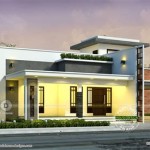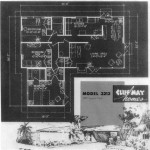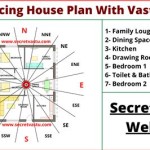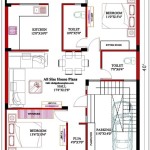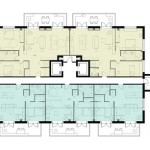Best Programs for Building Plans: A Comprehensive Guide
The creation of accurate and comprehensive building plans is a cornerstone of any successful construction project. Whether for a residential dwelling, a commercial space, or an infrastructure project, well-defined plans ensure clear communication between architects, engineers, contractors, and clients. Selecting the appropriate software for generating these plans is, therefore, a critical decision that can significantly impact project timelines, budgets, and overall quality. Numerous software options are available, each with its own strengths and weaknesses, catering to different needs and levels of expertise. This article will explore some of the leading programs for building plan creation, highlighting their key features and functionalities to aid in making an informed choice.
The process of generating building plans has evolved significantly from traditional hand-drafting methods. Computer-Aided Design (CAD) software has revolutionized the industry, allowing for greater precision, efficiency, and ease of collaboration. Modern CAD programs offer a wide range of tools for creating 2D and 3D representations of buildings, incorporating architectural, structural, mechanical, electrical, and plumbing (MEP) systems. Furthermore, Building Information Modeling (BIM) software takes this a step further by creating intelligent, data-rich models that provide a holistic view of the building throughout its entire lifecycle.
Choosing the right software depends on various factors, including the complexity of the project, the user's level of experience, the budget, and the specific requirements of the design process. Some software packages are geared towards architectural design, while others are more focused on structural engineering or MEP systems. It is essential to carefully evaluate these factors and compare the features and capabilities of different programs before making a decision.
AutoCAD: The Industry Standard for 2D and 3D Drafting
AutoCAD, developed by Autodesk, is one of the most widely recognized and used CAD software programs in the world. It has been an industry standard for decades and is renowned for its versatility and comprehensive set of drafting tools. AutoCAD excels in creating precise 2D drawings and 3D models, making it suitable for a wide range of applications, including architectural design, engineering, and construction documentation.
One of the key strengths of AutoCAD is its adaptability. It can be customized with specialized toolsets and plugins to cater to specific industry needs. For example, the Architecture toolset offers pre-built architectural objects, such as walls, doors, and windows, simplifying the design process for architects. Similarly, the Mechanical toolset provides tools for creating mechanical drawings and designs. Its comprehensive API (Application Programming Interface) allows developers to create custom applications and integrations, further extending its functionality.
AutoCAD supports a wide range of file formats, ensuring compatibility with other software programs and facilitating collaboration among different stakeholders. It also offers advanced features such as dynamic blocks, which allow users to create reusable components that can be easily modified and customized. Furthermore, AutoCAD integrates with Autodesk's cloud-based platform, enabling users to access and share their drawings from anywhere with an internet connection.
While AutoCAD is a powerful and versatile software, it can be complex to learn, especially for beginners. Its extensive feature set and intricate interface can be overwhelming for new users. However, Autodesk provides comprehensive training resources and documentation to help users get up to speed. The software's cost can also be a significant factor, as it requires a subscription-based license. Despite these potential drawbacks, AutoCAD remains a popular choice for professionals and firms seeking a robust and reliable CAD solution.
Revit: Leading the Way in Building Information Modeling (BIM)
Revit, also developed by Autodesk, is a leading BIM software package that is specifically designed for the architecture, engineering, and construction (AEC) industry. Unlike traditional CAD software, which focuses on creating 2D and 3D representations of buildings, Revit creates intelligent, data-rich models that provide a holistic view of the building throughout its entire lifecycle. This approach allows for better coordination, clash detection, and cost estimation, leading to more efficient and sustainable construction projects.
Revit operates on the principle of parametric modeling, which means that changes made to one element of the model automatically update all related elements. For example, if a wall is moved, all attached components, such as doors and windows, will automatically adjust their positions accordingly. This feature significantly reduces the risk of errors and inconsistencies and ensures that the building plans are always accurate and up-to-date.
Revit supports collaboration among different disciplines, allowing architects, structural engineers, and MEP engineers to work on the same model simultaneously. This integrated approach promotes better communication and coordination, reducing the likelihood of conflicts and delays. The software also offers tools for clash detection, which automatically identifies potential conflicts between different building systems, such as ducts and pipes, allowing them to be resolved before construction begins.
Revit provides a wide range of tools for creating detailed architectural designs, structural models, and MEP systems. It also offers features for energy analysis, daylighting simulation, and sustainability assessment. The software integrates with other Autodesk products, such as AutoCAD and Navisworks, as well as third-party applications, further extending its functionality. Like AutoCAD, Revit requires a subscription-based license and can have a steep learning curve, but its benefits in terms of improved coordination, reduced errors, and enhanced sustainability make it a valuable asset for many AEC professionals.
SketchUp: User-Friendly and Versatile for Conceptual Design
SketchUp, originally developed by @Last Software and now owned by Trimble Inc., is a popular 3D modeling software known for its user-friendly interface and versatility. While it may not have all the advanced features of AutoCAD or Revit, SketchUp is a powerful tool for conceptual design, visualization, and communication. Its intuitive interface and ease of use make it accessible to a wide range of users, including architects, designers, and hobbyists.
SketchUp's "push-pull" tool is one of its most distinctive features, allowing users to easily create 3D shapes by extruding 2D surfaces. This simple yet powerful tool makes it easy to quickly create building models and explore different design options. SketchUp also offers a wide range of tools for creating complex geometries, adding textures, and simulating lighting.
SketchUp has a large and active community of users who have created a vast library of pre-built models and components that can be downloaded and used in designs. This library, known as the 3D Warehouse, contains millions of models, including furniture, fixtures, and building materials, making it easy to populate designs with realistic elements. SketchUp also supports a wide range of plugins and extensions, which can be used to add specialized functionality, such as rendering, animation, and analysis.
SketchUp is available in both a free and a paid version. The free version, SketchUp Free, is a web-based application that offers a limited set of features but is still suitable for basic 3D modeling. The paid version, SketchUp Pro, offers a wider range of features, including advanced modeling tools, rendering capabilities, and support for plugins. SketchUp's affordability and ease of use make it a popular choice for architects and designers who need a quick and easy way to create 3D models and visualize their designs.
Other Notable Programs
Beyond the widely recognized programs highlighted above, several other software options cater to specific needs or preferences within the building plan creation process. ArchiCAD, developed by Graphisoft, is another prominent BIM software package that competes directly with Revit. It offers similar features and functionalities, including parametric modeling, collaboration tools, and clash detection. Softplan is a software package specifically designed for residential design and drafting, offering a user-friendly interface and a comprehensive set of tools for creating detailed house plans. Chief Architect is another popular option for residential design, offering similar features and capabilities to Softplan. These programs often cater towards a specific niche and offer specialized tools for those use cases.
The selection of the "best" program fundamentally depends on the specific requirements of the project, the user's proficiency, and the budget constraints. Each software package presents a unique set of features and a distinct workflow, making it essential to carefully evaluate the options and choose the one that best aligns with the project's goals and the user's capabilities. Experimenting with trial versions and seeking recommendations from industry professionals can further aid in making an informed decision.

Best Building Plan Design Visualize

Create Professional 2d Floor Plans Roomsketcher

Create Professional 2d Floor Plans Roomsketcher

Planner 5d House Design Home In 3d

Create Professional 2d Floor Plans Roomsketcher

Floorplanner Floor Planner 3d Room Tool

5 Free Layout Programs For Offices In 2025
Best Free Home Design To In 2025

Create Professional 2d Floor Plans Roomsketcher

Create Professional 2d Floor Plans Roomsketcher


